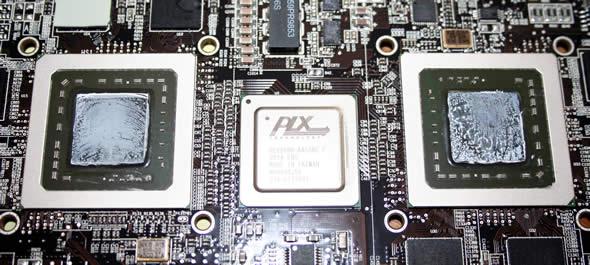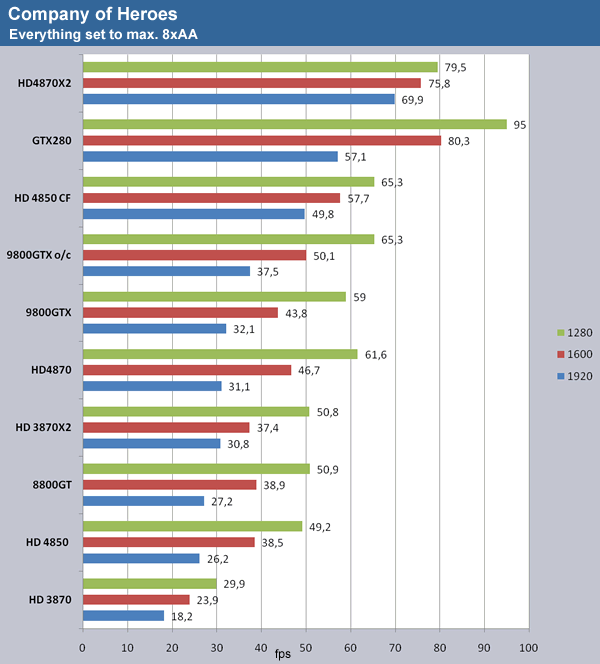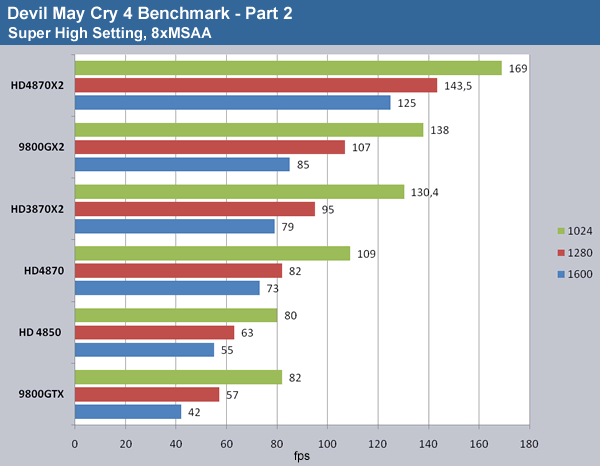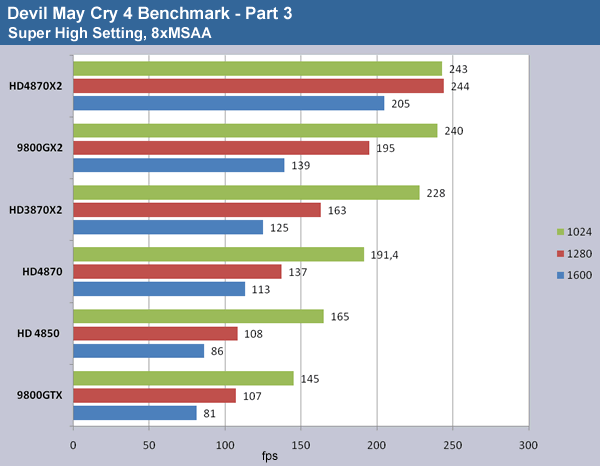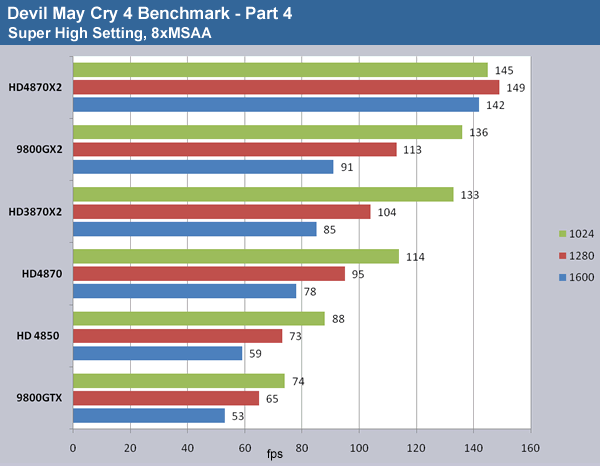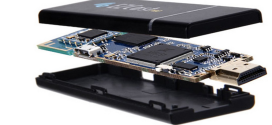When AMD launched the new HD4000 GPU’s earlier this year there was one thing missing; a card that would go head to head with Nvidia’s GTX280. Today we have tested an early version of the board that will fill this gap: the HD4870X2.
INTRODUCTION
When AMD launched the HD4850 and HD4870 earlier this year they continued with the strategy that they had started with the HD3000-series. Instead of trying to create a really fast, and expensive, GPU and then scale it down over the following 6-12 months for other segments, AMD decided to create the best GPU for the $200-$300 enthusiast segment and then either scale it down for the entry level segment or combine more than one GPU for the hard core gamers. The reception of the HD4850 and the HD4870 has been very good and these GPU’s even got NVIDIA to lower their prices quite a lot just to be able to compete.
All that really has been missing is a card that could go up directly against the GTX280 and today we are previewing the card that wants to do exactly that; the HD4870X2, codenamed R700.
As the name implies this is a card that is similar to the HD3870X2. AMD has taken two HD4870 GPUs and put them on one PCB, effectively creating a one-card CrossfireX solution. The card we are previewing here is an engineering sample that has the power saving features turned off so we will not measure this in today’s preview. As soon as we get the final version of the card we will of course also test this aspect of the card, especially as the card is expected to draw quite a lot of power.
THE HD4800
We recently wrote an introduction on the new HD4800-GPUs and I recommend that you read it to get a better understanding on the new features of the GPU.
In short the RV770, which is the codename of the HD4800, has a lot of improvements over the previous generations.
- While using the same manufacturing process (55nm) it has lots more transistors than the HD3800.
- It now has 800 Shader Processors compared to the 320 on the HD3800
- The Shader Core has been redesigned quite extensively
- A new memory controller has been created
- The GPU now supports the new GDDR5-memory
- HDMI now supports 7.5-sound compared to 5.1-sound on the HD3000 GPUs.
As we have seen in the previews and reviews of the HD4850 and HD4870 the new GPU’s offers in many cases more than double the performance of the older HD3850 and HD3870.
I mentioned GDDR5 above. This memory can now be found mainly on HD4870-boards. This should also be the type of memory we will find on HD4870X2-cards and is indeed what this card has. The advantages with GDDR5 over GDDR3 are of course that we can get even more performance out of it while needing less power. The theoretical peak bandwidth on a default clocked HD4870 is 3.6 Gbps while it is around 2 Gbps on the HD3870 which uses GDDR3.
The memory on this card is Hynix H5GQ1H24MJR T0C which is rated up to 4 Gbps. AMD also uses GDDR5 from Qimonda on some HD4870 cards so it is up to the board makers which memory they will use.
CLOSER LOOK
The engineering sample we are testing is a huge card. While changes can be made I think it is safe to say that this is pretty close to how the card will look in the end as it looks very similar to the HD3870X2.
The card needs power from an 8-pin and a 6-pin PCI-E power connector. If you do not plan to overclock it should also run with two 6-pin PCI-E power connectors.
On the back of the card we see the first indication that this is a dual-GPU card. In this picture we have removed the backplate that covers the memory chips.
After we remove the cooler we can see the two HD4870-GPU’s and the PLX-chip. This chip is a PCI Express Switch bridge chip and is responsible for the communication between the GPUs (http://www.plxtech.com/products/expresslane/switches.asp).
The PLX-chip used has the model number PEX86BB-AA50BC and is better than the one on the HD3870X2 as this one supports PCI Express 2.0 which means improved data throughput.
PERFORMANCE – SETTINGS
The cards were tested on the following system:
- Core 2 Quad Q6600 @ 2.7 GHz
- 2 GB DDR 2 memory @ 800 MHz
- ASUS Maximum Formula X38 motherboard
- Panasonic Blu-Ray drive
- Xbox 360 HD-DVD drive (USB 2.0)
- 320 GB Seagate SATAII
The cards tested were:
- HIS HD 3870
- HIS HD 3870X2
- Reference HD 4850
- Force3D HD 4850
- ASUS 8800GT
- ASUS 9800GTX
- ASUS 9800GTX (o/c to 800 MHz/2200MHz)
- Gigabyte GTX280
- HIS HD4870
- Reference HD4870X2
- Leadtek 9800GX2
The following drivers were used:
- Catalyst 8.6 for all AMD boards except the HD4850, HD4870 and HD4870X2
- Special Catalyst 8.6 with support for HD 4850
- Catalyst 8.7 for HD4870
- ForceWare 175.15 for all NVIDIA cards except GTX280 and 9800GX2
- ForceWare 177.35 for GTX280
- ForceWare 175.19 for GeForce 9800GX2
The card was tested on the following applications and games
- 3DMark Vantage
- Company of Heroes
- GRID Demo
- Devil May Cry 4 benchmark
When we get a production sample we will put the card through more games.
3DMARK VANTAGE
We choose to test the cards with the Xtreme setting in 3DMark Vantage.
The HD4870X2 easily crushes all opposition when we crank up the settings to the max in 3DMark Vantage. In fact, it beats the GeForce GTX280 by almost 40%. Is that something we also will see in games?
COMPANY OF HEROES
We’ve cranked up the settings to the max as well as turn on DX10 mode and AA has been set to 8xMSAA.
The first game we test shows that the 40% difference in performance between the GTX280 and the HD4870X2 we saw in 3DMark Vantage does not necessarily translate to the same difference in an actual game. The GTX280 performs much better at “lower” resolutions but the HD4870X2 manages to beat it with >20% better performance at 1920×1200. That is pretty impressive considering we are talking about a engineer sample with early drivers.
GRID DEMO
Grid is a new racing game from Codemasters. It is a fast racing game with great graphics. We choose to drive a few laps in the demo in the American Muscle Car race and record the average framerate with Fraps. To remove as much deviation of the score as possible we did this three times for each resolution and averaged the score.
Unfortunately we had already sent back our Gigabyte GTX280 when we got the HD4870X2 and thus had to use the closest card we had in-house at the time of testing: the GeForce 9800GX2 to compare with the HD4870X2. You can expect the GeForce GTX280 to perform a bit better than the GeForce 9800GX2 at the very high resolutions while performing approximately the same at the lower resolutions.
We tested the GeForce 9800GX2 a few times with the same result at the higher resolutions. The AMD cards currently crushes the GeForce 9800GX2 and the HD4870X2 manages to average over 60 fps even at 1920×1200.
DEVIL MAY CRY 4 DEMO
Capcom recently released the excellent Devil May Cry 4 game for the PC (and the consoles). They also released a benchmark which runs through 4 different bits of the game. We set the benchmark to the highest detail settings as well as 8XMSAA.
Just as with the Grid Demo we had to use the GeForce 9800GX2 as a substitution for the GeForce GTX280. You can expect the GeForce GTS280 to perform a bit better than the GeForce 9800GX2, especially at higher resolutions. The benchmark did not allow us to select a higher resolution than 1600×1200 when we selected the DX10 benchmark on the HD4870X2. We are not sure yet if this is a driver issue, a game issue or a card issue but when we a final board for review as well as upgrade to the full game we will investigate this further.
The results we see are really impressive. The HD4870X2 absolutely crushes all the other cards including the GeForce 9800GX2 getting in some cases >50% better scores at 1600×1200 than the other cards.
CONCLUSION
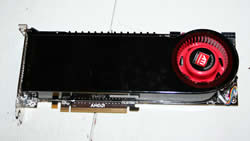
If there is something we did not like it was the fact that the card ran really really hot (you could not touch the backplate as it was so hot), something probably in part due to the fact that powersaving through Powerplay was not working and thus the card could not throttle down when in idle mode. This is something we also see in the HD4870 so AMD definitely has some work to do if they do not want the HD4870X2 to become a money and energywaster when you are not playing games.
The card is expected to be released in August and we will certainly be back then with a full review of the card. For those of you who cannot wait you already can get near-HD4870X2 performance by combining HD4850 and/or HD4870 in CrossfireX-configurations but then of course you loose the ability to combine two HD4870X2 boards in CrossfireX in the future.
 Bjorn3D.com Bjorn3d.com – Satisfying Your Daily Tech Cravings Since 1996
Bjorn3D.com Bjorn3d.com – Satisfying Your Daily Tech Cravings Since 1996





